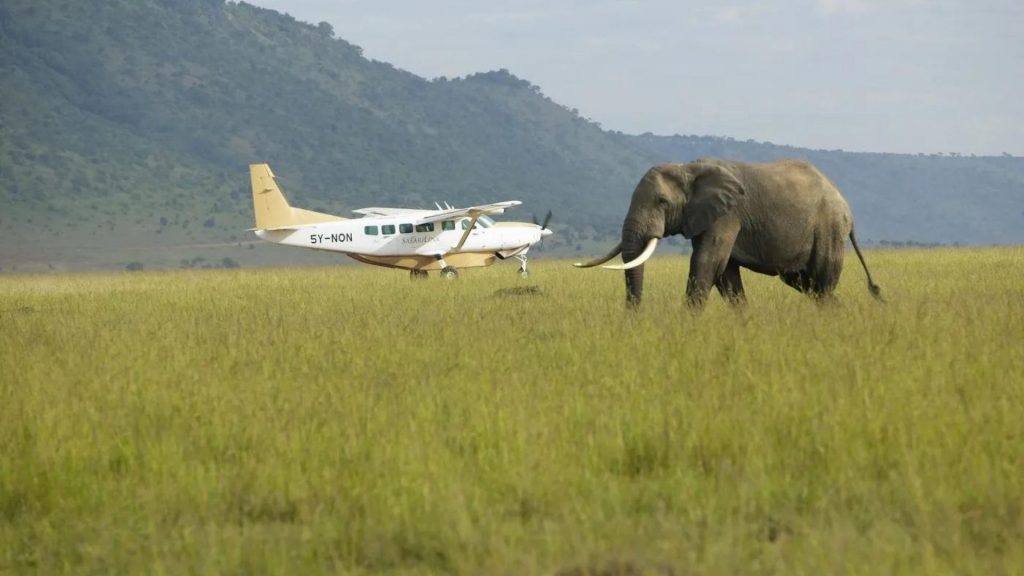The illegal wildlife trade transportation systems. In any product-based consumer business, getting the product to the customer is key for success. Similarly, national and international transportation systems are the backbone of wildlife trade, and wildlife traffickers heavily rely on logistics to smuggle contraband by land, air, and sea carriers. As a consequence, logistics companies are highly vulnerable to exploitation by wildlife traffickers.
Illegal Wildlife Trade Transportation Systems
Oftentimes, high-value wildlife products are shipped with regular postal services or smuggled by means of passenger aircrafts, air cargo carriers, or container shipping.
Smuggling With Passenger Aircrafts
According to seizures records, a large portion of rhino horns and ivory are smuggled from Africa to Asia by passengers on regular commercial flights. In addition, law enforcement authorities determined that ivory from Elephants, turtles, geckoes, rate birds, and hippo teeth have been smuggled on passenger aircrafts. In one case, in 2014, two Vietnamese citizens were arrested at Tambo International Airport in Johannesburg, South Africa, with 18 rhino horns in their baggage.
Smuggling With Air Cargo Carriers
Air cargo carriers may also be abused by criminals that intend to send illegal wildlife products overseas. Frequently, the express parcel service is exploited for sending small and sensitive parcels – sometimes containing alive animals. By contrast, regular air cargo transportation services are exploited for sending bulk shipments of wildlife products or even alive animals. In particular, elephant ivory, animal skin, plants, lion products, pangolins, and rhino horns are often smuggled by air cargo carriers. In one example, in 2010, over two tons of ivory were seized from the warehouse of an air cargo carrier located at Suvarnabhumi airport in Bangkok, Thailand, which was originally imported from Laos and about to be carried to its final destination in Dubai.
Smuggling With Container Shipping
Finally, criminals exploit sea shipping opportunities to smuggle very large quantities of illegal wildlife and wildlife products – Oftentimes hidden in containers declared as something else. Items such as timber, pangolin products, ivory, and animal skin are transported by container shipping. For example, in December 2012, Malaysian authorities seized 1500 elephant tusks hidden in timber pieces from two containers at Port Klang, which is the main gateway by sea into Malaysia. This shipment originated from the West African country Togo and Malaysia was most likely only a transit country, with the final destination typically being Thailand, China, or Hong Kong.
Legal Trophy hunting And airline bans
Even before the Cecil the Lion incident in early July 2015, a number of airlines took a stand on the issue, announcing that they would no longer transport hunting trophies – those shot legally under a permit from the issuing country and governed by international laws through CITES, the Convention on the International Trade in Endangered Species of Wild Fauna and Flora. For example, Emirates Sky Cargo stated in May 2015 that it “will not accept any kind of hunting trophies of these (elephant, rhinoceros, lion, and tiger) animals for carriage on Emirates services, regardless of CITES appendix.”
However, the uproar over the apparent illegal killing of Cecil, the famous lion from Zimbabwe’s Hwange National Park, prompted many other airlines to announce that hunting trophies would no longer be permitted on their flights. Sir Richard Branson, speaking on behalf of Virgin Atlantic, Virgin America, and Virgin Australia, argued that “big game is worth more alive than dead,” and thus Virgin “and our partner, Delta, have pledged to no longer carry hunting trophies on flights.”
Final Thoughts
However, the International Union for Conservation of Nature (IUCN) has endorsed the sustainable, legal, and equitable wildlife trade as a powerful nature-based solution to the twin challenges of improving rural livelihoods and conserving biological diversity. “It has the potential to improve the way societies and communities value nature, tipping the balance in favor of conservation,” says Inger Anderson, Director General of the IUCN. Through sport hunting, tourism, and the harvesting of sustainable wildlife products, local communities and private land owners can benefit from and receive incentives to invest in wildlife.
“Bans on trade can be useful in some cases, such as allowing species to recover when stocks are depleted,” according to the IUCN’s Sustainable Use and Livelihoods Specialist Group (SULi). However, in some cases, they can create unfavorable conservation incentives. For example, species may become undervalued, and habitat may be converted to more productive uses such as agriculture or plantation forestry. Alternatively, where species retain market value, trade restrictions may encourage illegal trade and overharvesting.”




